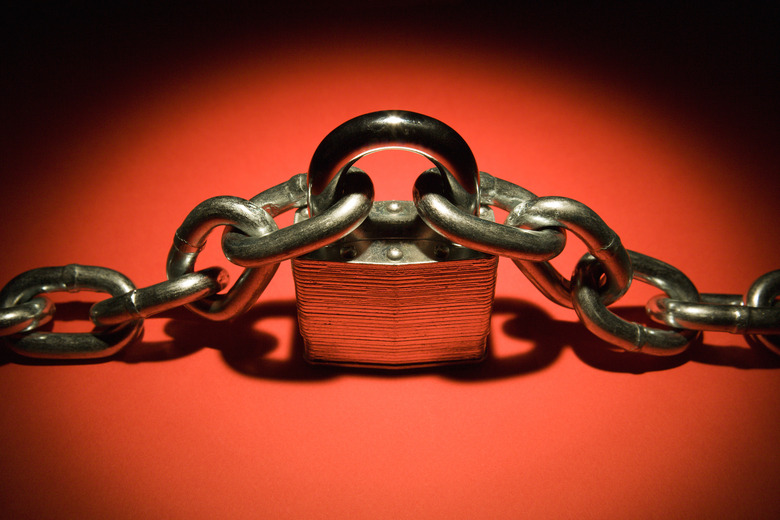Brinks Padlock Troubleshooting
A trusted name in security, Brinks padlocks offer homeowners an affordable way to secure their property and goods. Unfortunately, even a well-made lock can have problems if not properly maintained. Exposure to water and cold can freeze a lock, while rust or grime can build up inside the lock. With a few simple steps, you can fix these problems and avoid them in the future.
Parts of the Padlock
Parts of the Padlock
Padlocks are fairly simple devices. They lock securely and open up when the right key is used. This simplicity also narrows down all potential problems into one general category–locks that won't open. Before finding solutions to this problem, it's a good idea to familiarize yourself with the basic parts of a padlock.
The lock's keyhole is called the cylinder. With the proper key inserted, the cylinder should freely turn. The U-shaped bar is called the shackle. It should move in and out of the lock body, rotate freely, and close securely when locked. The block-shaped portion of the lock is known as the housing, and it contains the lock cylinder, pins and tumblers, and the latch that secures the shackle in place.
Problems
Problems
Thanks to the simplicity of padlock design, there are only a few potential problems that might occur. The most common is that the lock cylinder won't properly turn with the key inserted. Before attempting to fix this problem, however, always double-check that you are using the correct key for that lock. If you are, then the lock's internal parts may be frozen from cold or stuck because of rust or grime. These same causes can also cause the lock shackle to open and close improperly, or prevent the open shackle from rotating freely.
Fixes
Fixes
When moisture gets inside a padlock housing and temperatures drop low enough to freeze it, the ice that forms inside the housing will cause problems. Solving this problem is as simple as thawing the ice. This may be done by soaking the lock in warm water. After a few minutes of warm water, try the lock again. In some circumstances, a lock can be warmed using a cigarette lighter or match, but before trying this method, be aware that the flame may discolor or damage the lock.
During warmer weather, moisture can still cause problems with padlocks by causing the metal to rust. When the internal pieces of the lock rust, they will stick and stop moving freely. A similar problem occurs when dust and dirt have gotten into the lock.
To fix such problems, apply a light lubricant, such as machine oil, to the inside of the lock. While many people will try WD-40 for this purpose, locksmiths recommend a silicone- or Teflon-based lubricant that will better protect the lock from future problems. Apply the lubricant in the keyhole and in the two holes where the shackle enters the lock body. Once lubricant has been applied, do what you can to help it work its way into the parts of the lock by working the shackle in and out, and by doing the same with your key in the lock. The combination of motion and lubricant will help to unstick the parts that have rusted into place. If a light application of lubricant doesn't work, consider soaking the lock in it. While this method may be slower, it allows the lubricant to further penetrate every part of the mechanism and loosen up any rust or dirt.
Avoiding Future Problems
Avoiding Future Problems
All of the above problems can be avoided by taking a few precautionary steps in advance. If a lock is likely to be exposed to moisture, cold or dust, consider getting a weatherproof padlock. The rubber and plastic cover of a weatherproof lock will seal out any moisture and dirt. Additionally, use lubricant on your padlocks before there is a problem. A silicone- or Teflon-based lubricant will protect the internal workings of a lock, helping all of the parts and pieces to continue operating smoothly.
